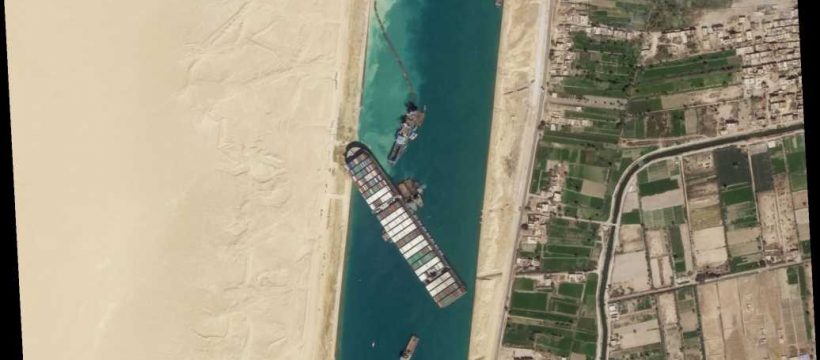SUEZ, Egypt (AP) — Engineers on Monday “partially refloated” the colossal container ship that continues to block traffic through the Suez Canal, a canal services firm said, without providing further details about when the vessel would be fully set free.
Satellite data from MarineTraffic.com showed that the ship’s bulbous bow, once firmly lodged in the canal's eastern bank, had been wrested from the shore.
Nearly a week ago, the skyscraper-sized Ever Given got stuck sideways in the crucial waterway, creating a massive traffic jam. The obstruction has held up $9 billion each day in global trade and strained supply chains already burdened by the coronavirus pandemic. At least 367 vessels, carrying everything from crude oil to cattle, were still waiting to pass through the canal, while dozens more were taking the alternate route around the Cape of Good Hope at Africa's southern tip, adding some two weeks to journeys and threatening delivery delays.
The partial freeing of the vessel came after intensive efforts to push and pull the vessel with 10 tugboats when the full moon brought spring tide, Leth Agencies said, raising the canal's water level and hopes for a breakthrough. Videos shared widely on social media appeared to show tugboats in the canal sounding their horns in celebration of the Ever Given being wrenched from the shore, the most significant sign of progress yet.
Lt. Gen. Osama Rabei, the head of the Suez Canal Authority, confirmed that the vessel had been partially refloated after responding successfully to “pull-and-push maneuvers.” He said that workers had almost completely straightened the vessel's course and that the stern had moved 102 meters (334 feet) from the canal bank.
Overnight, several dredgers had toiled to vacuum up 27,000 cubic meters of sand and mud around the ship. Another powerful tugboat, Carlo Magno, was racing to the scene to join the efforts.
Although the vessel is vulnerable to damage in its current position, Shoei Kisen Kaisha Ltd., the company that owns the Ever Given, dismissed concerns on Monday, saying that the ship's engine was functional and it could pursue its trip normally when freed. It wasn't clear whether the Panama-flagged, Japanese-owned ship, hauling goods from Asia to Europe, would head to its original destination of Rotterdam or if it will need to enter another port for repairs.
Ship operators did not offer a timeline for the reopening of the crucial canal, which carries over 10% of global trade, including 7% of the world's oil. Over 19,000 ships passed through last year, according to canal authorities. Millions of barrels of oil and liquified natural gas flow through the artery from the Persian Gulf to Europe and North America. Goods made in China — furniture, clothes, supermarket basics — bound for Europe also must go through the canal, or else take a circuitous 5,000 kilometer (3,1000 mile) detour around the southern tip of Africa.
The unprecedented shutdown has threatened to disrupt oil and gas shipments to Europe from the Middle East and raised fears of extended delays, good shortages and rising costs for consumers.
Canal authorities have desperately tried to free the vessel by relying on tugs and dredgers alone, even as analysts warned that 400-meter-long ship, weighing 220,000 tons, may be too heavy for such an operation. As a window for a breakthrough narrows with high tide receding this week, fears have grown that authorities would be forced to lighten the vessel by removing the ship’s 20,000 containers — a complex operation, requiring specialized equipment not found in Egypt, that could take days or weeks.
___
DeBre reported from Dubai, United Arab Emirates.
Source: Read Full Article
